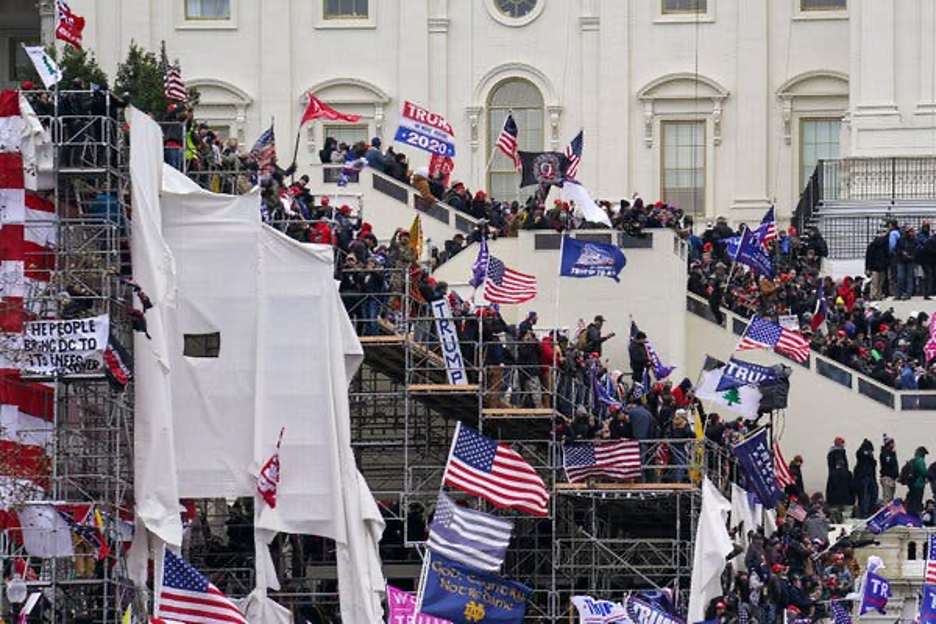
Photo credit: John Minchillo/Associated Press
Photo credit: John Minchillo/Associated Press
January 07, 2021
The invasion of the U.S. Capitol on January 6, 2021 by pro-Trump extremists forced a suspension of the Joint Session of Congress certifying the results of the 2020 election and necessitated the evacuation of elected officials and staff.
Security preparations for the certification were likely developed and implemented with the knowledge that state capitols have been a frequent target of extremists throughout 2020. Why these preparations failed so dramatically and the lack of a more appropriate law enforcement response to the incursion raises grave concerns which should be thoroughly investigated.
Capitol buildings hold a particular symbolic weight. As the seat of state or national governments, they are the embodiment of government – and a ripe target for antigovernment and other right-wing extremists. By the end of 2020, storming legislative buildings had become an accepted tactic for right-wing protesters.
On April 30, 2020, a mix of militia members, boogalooers, Trump supporters and others protested outside the Michigan statehouse in Lansing—one waving a sign reading “Tyrants get the rope.” Armed protesters soon forced their way into the state capitol, where they angrily confronted Michigan State Police troopers trying to protect the building. A few of the protesters were arrested several months later for their roles in an alleged militia plot to kidnap the governor of Michigan. In September, Proud Boys, militia members, and other right-wing protesters once again forced their way into the Michigan capitol.
In August, 2020, right-wing anti-lockdown protesters stormed the Idaho statehouse in Boise, shattering a glass door and forcing their way past police. Armed right-wing protesters stormed the Oregon capitol in Salem in December—while the state legislature was in session.
The U.S. Capitol in Washington, D.C., has been targeted before, as well. In March 1954, four left-wing Puerto Rican nationalists actually opened fire inside the House of Representatives Chamber of the Capitol, wounding five members of Congress.
In March 1971, members of the Weather Underground, a left-wing terrorist organization, exploded a bomb inside the Capitol as a protest against American actions in Laos during the Vietnam War. In November 1983, left-wing extremists set off a bomb in the building in retaliation for the U.S. invasion of Grenada.
In 1994, right-wing militia leader Linda Thompson called for an armed march of the “unorganized militia” of the United States on Washington, D.C., in which participants would arrest and put on trial supposedly treasonous representatives and senators. Support for the march fizzled and Thompson was forced to call it off.